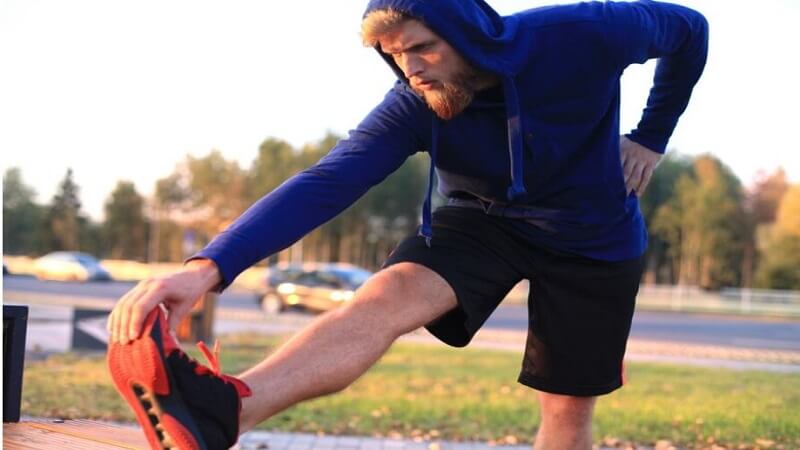Playing sports is a great way to maintain an active lifestyle, improve physical fitness, and even enjoy social interaction. However, with the thrill of competition and exercise comes the risk of injury. Whether it’s a sprained ankle from a quick pivot or a sore shoulder from repetitive motion, injuries can sideline even the most dedicated athlete. In this post, we’ll identify some common sports injuries and provide practical tips for a speedy recovery. Understanding these injuries will help you take preventive measures, recognize symptoms early, and know when it’s time to seek professional help, such as teeth replacement in Ocala, FL, if an accident affects your dental health.
Sprains and Strains A Painful Pair
Sprains and strains are among the most common sports injuries. A sprain involves the stretching or tearing of ligaments, typically affecting the ankles, knees, or wrists. Strains, on the other hand, involve muscles or tendons and often occur in the back or legs. Symptoms include pain, swelling, and limited movement.
To recover quickly, follow the R.I.C.E method—Rest, Ice, Compression, and Elevation. Rest the injured area to prevent further damage. Apply ice for 15-20 minutes every few hours to reduce swelling. Use a compression bandage to provide support and limit movement. Finally, elevate the injured limb to decrease swelling and promote healing.
Shin Splints The Runner’s Rival
Shin splints cause pain along the shinbone and are common among runners, dancers, and military recruits. They occur due to overuse or an increase in activity intensity. Tight calf muscles and improper footwear can also contribute to shin splints.
Recovering from shin splints involves resting and reducing activities that cause pain. Icing the affected area can help manage inflammation. Consider wearing supportive footwear and using orthotic insoles to reduce strain on the shins. Stretching exercises for the calves and strengthening routines for the lower legs may also aid in prevention and recovery.
Tennis Elbow Not Just for Tennis Players
Despite its name, tennis elbow is not exclusive to tennis players. It’s a condition caused by repetitive motions of the wrist and arm, leading to pain on the outside of the elbow. Athletes involved in racket sports, weightlifting, or activities requiring gripping and lifting are prone to this injury.
To recover, avoid activities that exacerbate the pain. Use a brace or forearm strap to reduce strain on the elbow. Applying ice and taking anti-inflammatory medications can help manage pain and swelling. Physical therapy exercises aimed at strengthening the forearm muscles can also aid in recovery.
Knee Injuries When Stability Takes a Hit
Knee injuries, such as ACL tears, meniscus tears, and patellar tendonitis, are prevalent in sports that require quick changes in direction or jumping. These injuries can be debilitating and may require surgical intervention, especially in severe cases like ACL tears.
Recovery from knee injuries often involves a combination of rest, physical therapy, and in some cases, surgery. Rehabilitative exercises focus on strengthening the muscles around the knee to provide stability and support. Wearing a knee brace during activities can help prevent further injury.
Shoulder Injuries A Rotational Challenge
Swimmers, baseball players, and volleyball athletes often experience shoulder injuries due to the repetitive overhead movements required in these sports. Rotator cuff injuries and shoulder impingement are common issues that can limit range of motion and cause pain.
Rest and modify activities to avoid overhead movements. Physical therapy exercises focused on strengthening the shoulder muscles and improving flexibility can facilitate recovery. In severe cases, medical intervention may be necessary.
Fractures and Dislocations Beyond the Break
Fractures and dislocations are severe injuries that occur when a bone breaks or a joint is forced out of its normal position. These injuries require immediate medical attention and can happen in high-impact sports like football or skating.
Recovery involves immobilization of the injured area with casts, splints, or slings. In some cases, surgery may be required to realign and stabilize the bones. Physical therapy is crucial for regaining strength and mobility once the initial healing phase is complete.
Preventive Measures The Key to Staying in the Game
While injuries can be part of playing sports, there are steps you can take to minimize the risk. Warm up properly before engaging in physical activities to prepare your body. Use appropriate gear and equipment, including footwear, to reduce strain on your body. Listen to your body and rest when needed to avoid overuse injuries.
Conclusion
Understanding common sports injuries and knowing how to recover faster can help athletes return to their favorite activities more quickly and safely. By taking preventive measures, recognizing symptoms early, and seeking appropriate treatment, you can reduce downtime and improve your overall performance. If you’re dealing with a sports injury, consider consulting a healthcare professional to develop a personalized recovery plan tailored to your needs. Remember, taking care of your body ensures you can continue enjoying the sports you love for years to come.
